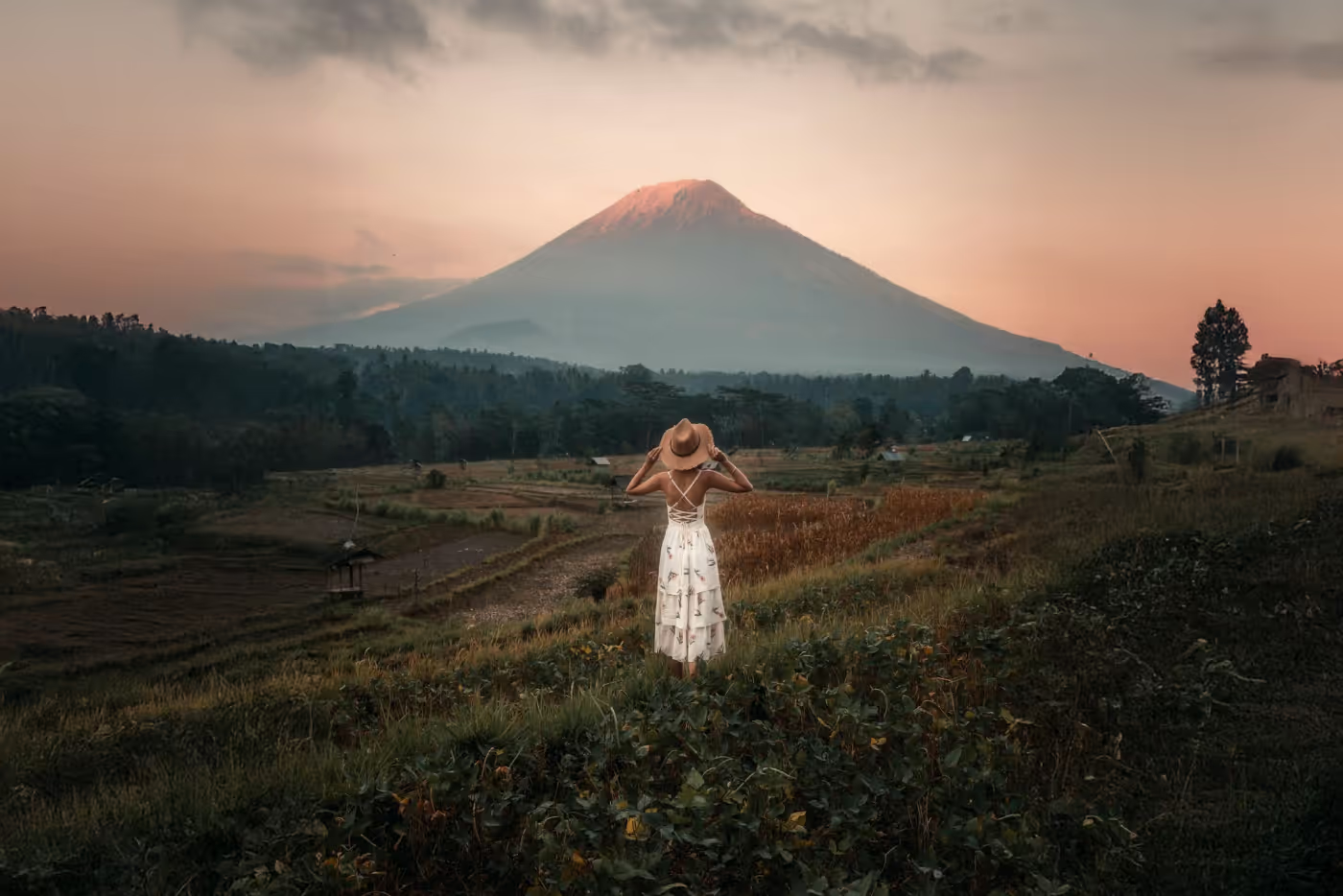Forget the crowded shores of Kuta and Seminyak where selfie sticks outnumber seashells. Bali's true coastal magic lies in its hidden coves, dramatic black sand stretches, and sacred shores where local fishing communities still practice centuries-old traditions alongside the rhythms of the tides. These five extraordinary beaches reveal Bali's wilder, more authentic coastal character—places where the Instagram geotag remains refreshingly sparse.

Bias Tugel: The Hidden Pocket Paradise
Tucked between two dramatic headlands just south of Padangbai harbor lies Bias Tugel, a 130-meter crescent of white sand that embodies the phrase 'hidden gem.' Accessible only via a 15-minute scramble down a rough-hewn path through coastal forest, this pocket paradise rewards the moderately adventurous with crystalline waters and a near-perfect horseshoe bay protected from the open ocean's swells.
What elevates Bias Tugel beyond mere beach status is its thriving coral garden that begins just meters from shore. The bay's unique topography creates a natural aquarium effect—even novice snorkelers can drift effortlessly above brain corals, sea fans, and schools of vibrant reef fish without battling currents. The beach's limited access keeps visitor numbers low, while a handful of rustic warungs serve fresh-caught fish and cold Bintangs without disturbing the pristine atmosphere.

Yeh Leh: The Prehistoric Shore
Unlike anything else in Bali, Yeh Leh presents visitors with an otherworldly landscape where thousands of perfectly rounded boulders carpet the shoreline in a geological phenomenon that appears more sculptural installation than natural formation. These volleyball-sized stones, polished by centuries of tidal action, create a mesmerizing pattern against the black volcanic sand and the deep blue of the Bali Sea.
What makes Yeh Leh truly special is its status as Bali's most photogenic yet least photographed beach. While local fishermen use the massive stone field as a natural boat launch, tourists rarely venture to this remote northwestern shore. The dramatic backdrop of terraced rice fields descending nearly to the tideline creates a visual confluence of Bali's iconic agricultural landscape with its volcanic maritime heritage—a photographer's dream untouched by the Instagram hordes.

Pasir Putih: The White Sand Sanctuary
Nestled between towering coconut groves and the inky blue waters of east Bali, this 700-meter stretch of brilliant white sand provides a striking contrast to the region's predominantly volcanic black shores. Known to locals as Virgin Beach and to travelers in-the-know as White Sand Beach, Pasir Putih has maintained its pristine character despite slowly growing popularity, thanks to the stewardship of the local fishing community who maintain the shore with religious devotion.
What distinguishes this beach beyond its obvious aesthetic appeal is its remarkable dual personality. The northern end hosts traditional outrigger fishing boats (jukung) painted in vibrant colors, with fishermen mending nets and sorting the day's catch in age-old rhythms. The southern stretch offers a natural reef barrier creating a peaceful swimming lagoon, while the center remains an open expanse of uninterrupted white sand—allowing visitors to choose their perfect beach experience within a single spectacular location.

Gunung Payung: The Clifftop Descent
Accessed via a challenging 301-step descent through a temple complex and along a dramatic limestone cliff face, Gunung Payung rewards the determined with perhaps Bali's most perfectly formed beach. This 100-meter crescent of golden sand sits embraced by soaring white cliffs, creating a natural cathedral of stone and sea that captures the imagination and calms the spirit.
The beach's geographic isolation has preserved both its pristine environment and spiritual significance. The waters here feature exceptional clarity due to the absence of river outlets nearby, while a vibrant reef system thrives just offshore. The climb back up—though strenuous—creates a natural visitor filter that ensures this beach never feels crowded. The few who make the journey often describe an almost sacred quality to the space, enhanced by the small meditation caves visible in the cliff face where holy men have sought enlightenment for centuries.

Pantai Nyang Nyang: The Last Wild Shore
Stretching for nearly a kilometer along Bali's southwestern Bukit Peninsula, Nyang Nyang represents the island's last truly wild beach accessible to visitors. The journey requires navigating an unsigned turnoff from the main road, a 15-minute walk through scrubland, and finally a descent down a steep cliff path—efforts that filter out all but the most determined beach seekers and preserve this shore's untamed character.
What makes Nyang Nyang extraordinary is its scale and emptiness—a vast expanse of white sand against emerald waters that you might share with only a handful of other souls. Massive waves crash dramatically against the shore, creating a constant symphony of natural sound. The beach features several shipwrecks partially buried in the sand, creating natural sculptures that speak to the power of the ocean currents here. With no development whatsoever, not even a single warung, Nyang Nyang offers something increasingly rare in Bali—a completely unmediated relationship with the island's raw coastal power.









